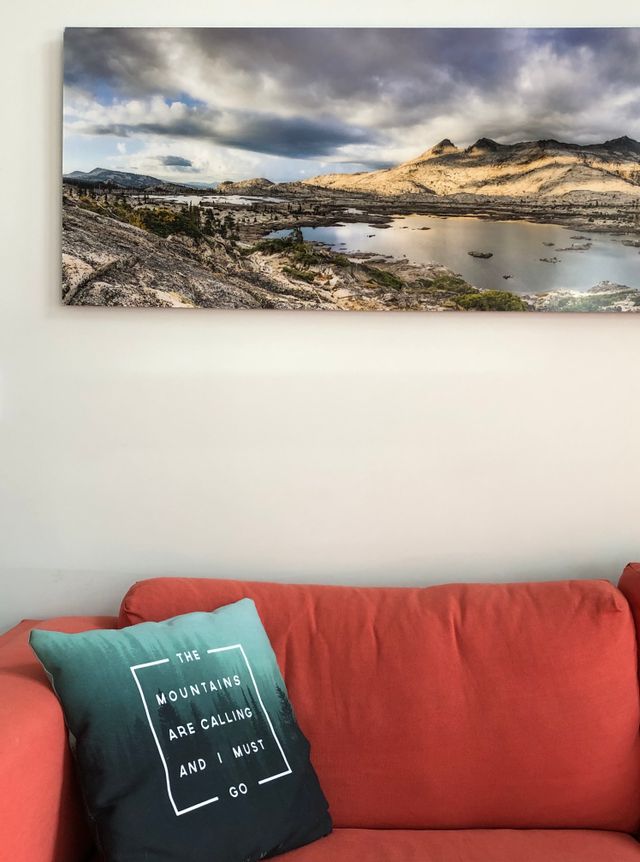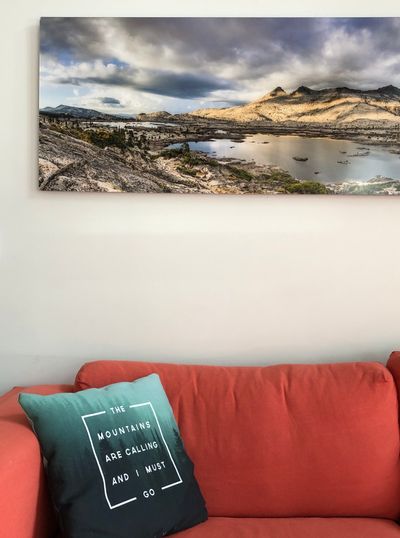Coworking & The Future of Work

Five years ago, I left Silicon Valley for the mountains. My husband and I reached a point where we no longer could see a healthy future for ourselves or our children if we stayed. As the oft quoted John Muir said, “The mountains are calling, and I must go.”
So We Went
We moved to South Lake Tahoe in pursuit of an outdoor lifestyle, of a small tight-knit community, of the best environment we could provide for our children.
The only question mark was work. Could we still access a labor market that would allow us to thrive economically?
We were lucky. For the first year living in Tahoe, we had work that we were able to bring with us from Silicon Valley - me, an education grant that I could wrap up from afar, and my husband, a startup that only required him to drive to San Francisco once a week or so. Not ideal, but doable. The cost of living in Tahoe was less than half of what it had been in Mountain View, so that made our decision to give it a shot much easier. We decided to give ourselves two years. If Tahoe wasn’t working for us by then, it would be back to the city.
That we had to worry about finding work is something that has started to shift as more and more companies are getting comfortable with a distributed workforce. It hasn’t shifted enough, though. Companies that aren’t actively recruiting from the digital, remote workforce are missing out. Likewise, communities that aren’t supporting their workforce to participate remotely are missing out as well. This is particularly true of rural communities that in so many cases are desperate to diversify their economy or risk the demise of their communities completely.
What we did is create the first coworking community in South Lake Tahoe. We did this not only to help us stay in Tahoe and thrive, but to support others in their own pursuits of participating in industries not traditionally available in our tourism-based mountain town. We wanted to show the community that there were options available outside of the service industry, outside of the ski resorts & casinos. This was important for a community like South Lake Tahoe that is highly susceptible to the swings of the economy and climate change. If the snowflakes don’t fall, there has to be a way to economically support the town. Diversification can do that. A workforce that is tapping into a global market, not just a local one, can do that.
BUILDING THE INFRASTRUCTURE FOR THE FUTURE OF WORK
This is a pillar of the Future of Work. A truly global workforce. One where your location is independent of your career path. Where the previously inseparable link between where you work and where you live is severed. So, why are so many tech giants and economic development organizations still pushing for an old model? That model is about giant HQs, and about cities competing to attract them. We saw this recently with the new Amazon HQ circus. And I say circus because I watched as economic development groups spent countless hours on a pitch for why their city should be Amazon’s pick when many weren’t even in the running in the first place. Communities give huge tax breaks and incentives to bring in a major company, but the studies show over and over that it is ultimately the companies that win, not the workers and their communities. Subsidizing private industry is not paying off.
Competing for the attention of a company against other communities is a “zero sum game” mentality that will not stand up to the changing global economy. For secondary and smaller regions, there isn’t really a way to compete for the top tier firms anyhow. The big announcements I see in our nearby regions are for 200 jobs here, 75 jobs there, the occasional big “win” of 1,000 jobs...although many of those are not high wage. We may be replacing coal mines with distribution centers, but is that really progress? If that distribution center or factory closes, there is still a gaping economic hole that can destroy a town. There is no reason to continue putting all of our economic eggs in one basket. Why is economic development as an industry still using that model? Job attraction, retention, and expansion, are old metrics that need to evolve.
The new metric is human capital. Is your workforce prepared to participate in the digital labor market? If not, what are you doing to prepare them? Is your community, your social capital attractive enough - good schools, attainable housing, access to leisure & entertainment - to retain your human capital? If not, what are you doing to make it attractive?
Coworking spaces, especially in smaller, more rural communities, are helping to provide the infrastructure for the future of work. Here in South Lake Tahoe, we have created what I have previously called the modern day community center. Workers from a huge range of industries now have their own remote HQ, complete with friendly faces, good coffee, and water cooler chit chat. We all get to live in a place we love, but still have access to the careers we had in Silicon Valley, New York, Chicago, etc.
A DISTRIBUTED WORKFORCE IS A BETTER WORKFORCE
I recently had an amazing conversation with John O’Duinn, the author of the book Distributed Teams. (I highly recommend the book). We talked about how workers in San Francisco for major firms, including himself, pay exorbitant prices to buy or rent a home that isn’t too far from the office. Then, upon arriving at the office, they sit down at their desk and jump into video conferences. Sometimes even with people on the same floor. If you can’t afford the high cost of living? Then you commute, for hours a day, to arrive at that same office and sit on your computer connected to the internet. Why are we doing that??? The carbon footprint alone of commuting and powering a giant HQ that no one needs to be at is ludicrous. We can do better.
Here’s a better scenario...
My family moved to a community we love. For work, my commute is a whopping 10 minutes. If I include school drop off, it's still less than 30 minutes tops. If the weather is nice, I can commute by bike. The office? A shared space with great lighting, friendly faces, and stellar internet access. After a productive work day, I can still squeeze in a mountain bike ride, or take my daughter to the local climbing gym, or take the time to just enjoy my family. I have that time because I’m not sitting in rush hour traffic for 2 hours, each way. The result? I am healthier. I get to spend time with my children. My carbon footprint is drastically reduced. I’m not commuting anymore, my office is smaller and I share it with lots of people, so the resource requirements for that alone are reduced. Additionally, my income is being generated out of the area and is brought in, where I then spend it locally at stores, restaurants, and for services, thus supporting the local economy. I want to see more people have this option.
Another benefit for companies is by expanding their reach, they can actually recruit the best talent for the job and don’t have to depend on who is nearby their giant HQ that no one really needs to be at. Recruiting becomes less about who can afford to live nearby, or who is willing to commute in if they can’t, and about who actually has the right competencies to get the job done. This can go a long way in improving not just the quality of a company’s workforce, but also its diversity. And that is good for every industry.
We are seeing the global economy swing towards a distributed model and away from the monolithic centralized systems of the past century. Rather than fight it, communities should embrace and prepare for it. My contribution is creating one piece of the infrastructure in my chosen mountain town, at least for now. My call to the economic development world is how will you support the shift?

